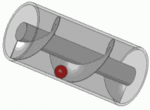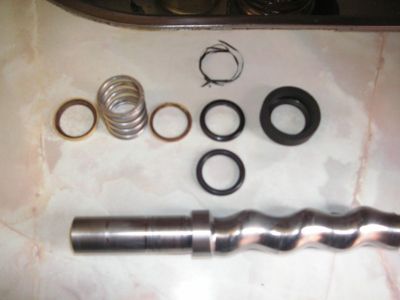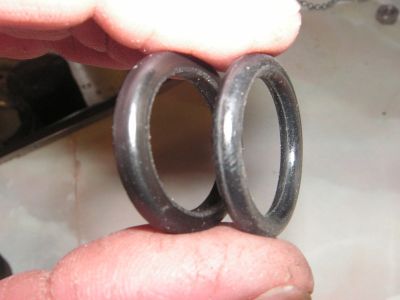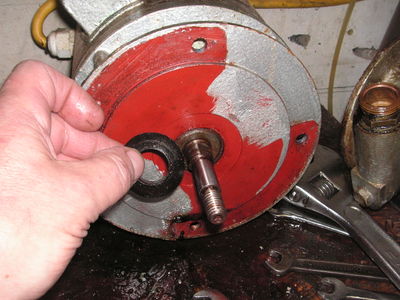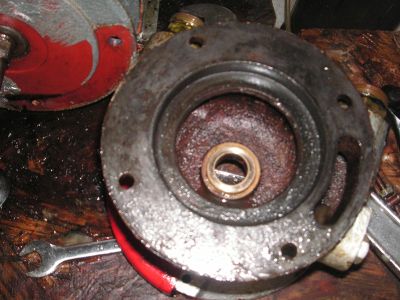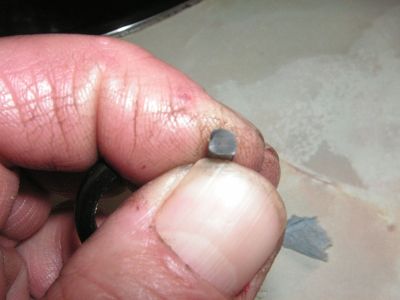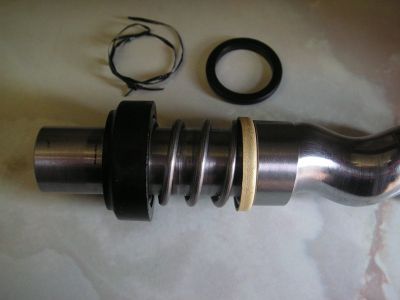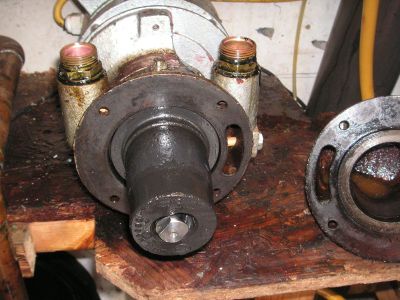Difference between revisions of "Pump - Mono MS"
| Line 62: | Line 62: | ||
File:Mono ms7 assembled seal.JPG|The seal assembled on the stator. The O ring within the black ceramic disk can slide along the shaft, obviating the need for bellows. In the background is the old O ring and the fabric causing the leak. | File:Mono ms7 assembled seal.JPG|The seal assembled on the stator. The O ring within the black ceramic disk can slide along the shaft, obviating the need for bellows. In the background is the old O ring and the fabric causing the leak. | ||
File:Mono ms8 part assembled pump.JPG|Pump during reassembly. It's important to note that the stator is screwed onto the motor shaft with a left hand thread. Flats are provided on the motor shaft and on the end of the rotor to allow the use of spanners. | File:Mono ms8 part assembled pump.JPG|Pump during reassembly. It's important to note that the stator is screwed onto the motor shaft with a left hand thread. Flats are provided on the motor shaft and on the end of the rotor to allow the use of spanners. | ||
| − | File:Mono ms9 part assembled pump with stator.JPG|Stator in place on the rotor, ready for the final fitting of the pump | + | File:Mono ms9 part assembled pump with stator.JPG|Stator in place on the rotor, ready for the final fitting of the pump end cover. |
</gallery> | </gallery> | ||
| | ||
| | ||
| | ||
Revision as of 21:43, 10 May 2013
Mono have been manufacturing pumps since 1935. The design is what's known as a progressive cavity pump, being a single helix rotor operating within a twin helix stator. In very simplistic terms it can be thought of as being similar to an Archimedean spiral pump.
The MS pump has been in manufacture for at least 40 years and spare parts are still available. New these pumps retail at several hundred pounds but, although they don't appear frequently, they can be found second hand at reasonable prices on on line auction sites.
The design is self priming and can be considered as a positive displacement pump. It is capable of pumping a large range of media including slurries and small entrained solids, although the latter will obviously enduce premature ware. Different stator materials are available and the writer has had a viton stator pumping bio and vegatable oil in an MS pump for nearly five years at the time of writing with no noticible adverse effects.
The pumps ability to pump viscous liquids makes it ideal for pumping WVO and semi-solid fats.
The Mono MS has the following specifications and performance:
- power(kw) ... 0.18
- Max. head ... 3.5 bar
- Flow at 1450rpm ... 12.5 L/min @ 0 bar - 5.3 L/min @ 3.5 bar.
- Max. SUCT ... 8m (self priming)
- Max operating temperature ... TBA
- Inlet/Outlet connections … ¾” BSP, female
- Body material ... cast iron
- Rotor material ... stainless steel
- Stator material ... synthetic nitrile rubber (standard) but others available including viton.
- Weight ... 16kg (including motor)
Mono MS mechanical seal rebuild
The writers MS pump was found leaking so was dismantled. The problem was found to be a piece of landscaping fabric (used as a filter in the system). This seal differed from others in that there are no bellows. The static seal is made by an O ring located in the ceramic disc which seals it to the shaft.
- Mono MS mechanical seal rebuild

